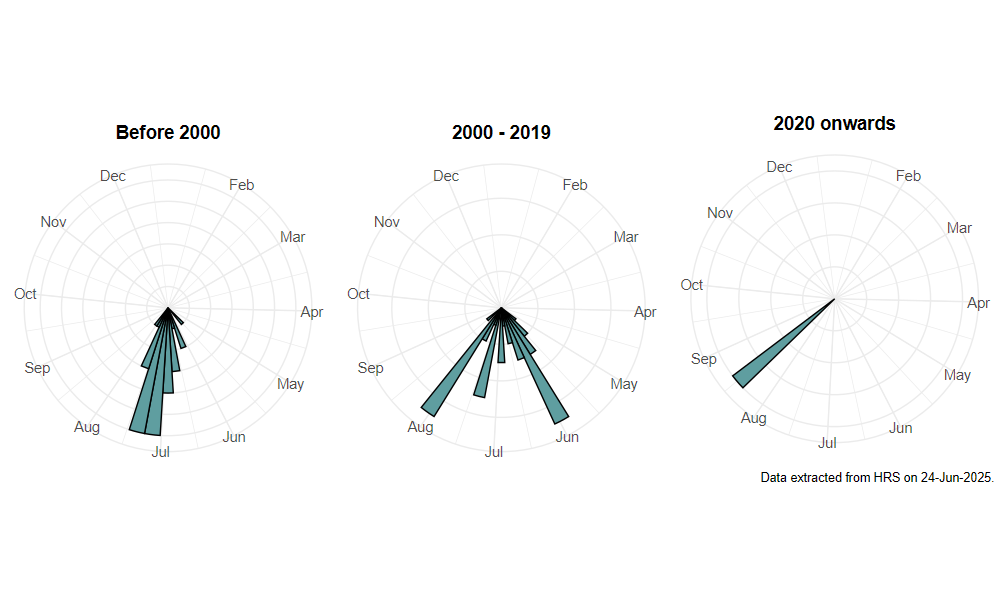Pipizella maculipennis (Meigen, 1822)
Identification
Identification difficulty = 4. ![]()
![]() according to Ball & Morris, 20241
according to Ball & Morris, 20241
Biology
There are continental reports of larval associations as a predator upon root-dwelling aphids. There are no British rearing records. The adult is rarely recorded and there are no clear pointers as to its particular behaviour, but others within the genus are sun-baskers and flower visitors, especially at low-growing umbellifers. The range of localities suggests that its habitat preferences range from grasslands through grass heaths to woodlands, but a common thread seems to be low-growing vegetation in warm situations.
Flight period
The following plots show the number of unique records per week excluding those reported to be of immature stages.

Status
Lower Risk (Nationally scarce) - Ball & Morris, 20142. Rare (RDB3) - Falk, 19913 and Shirt, 19874.
Distribution
Although there are records from southern and western Scotland, the majority of records occur south of Warwickshire. There are post-1990 records from West Gloucestershire, North Wiltshire, North Hampshire, South Hampshire, Isle of Wight, West Sussex and West Suffolk.

-
Ball, S., & Morris, R. (2024). Hoverflies of Britain and Ireland. WILDGuides (3rd ed.). Oxford: Princeton University Press. ↩
-
Ball, S., & Morris, R. (2014). A review of the scarce and threatened flies of Great Britain. Part 6: Syrphidae. ( No. 9). Species status (pp. 1–130). Peterborough: JNCC. ↩
-
Falk, S. (1991). A review of the scarce and threatened flies of Great Britain. ( No. 39). Research and Survey in Nature Conservation (pp. 1–194). Peterborough: NCC. ↩
-
Shirt, D. (Ed.). (1987). Red Data Books: 2. Insects. Peterborough: NCC. ↩